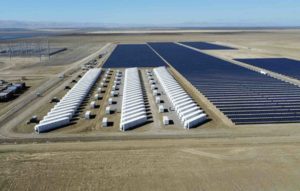Leading Australian carbon offset provider, Climate Friendly, says it has joined forces with one of the world’s leading carbon project developers, South Pole Carbon, today announcing that the Switzerland-based company, with offices in 10 countries, has become a major shareholder in Climate Friendly. “This is the first investment by an international company into an Australian carbon business, sparked by the new carbon legislation,” said Climate Friendly CEO Freddy Sharpe. “There are many opportunities for us to pursue together and one of the most exciting is the development of new Australian carbon projects.”
South Pole Carbon CEO Renat Heuberger said his company was “particularly interested” in the Australian market, and that it had chosen Climate Friendly as a partner due to a “a natural synergy” between the two. “Our two companies joining forces makes perfect sense as both companies understand the urgency of acting on climate change and building sustainable global businesses that benefit our planet,” he said. “I see huge opportunities both in Australia and around the world.”
Mike Tournier, CEO of the Carbon Market Institute, said was a win for green business: “Having developed a strong reputation and client base globally, Climate Friendly has now attracted foreign investment and a secured a key strategic partnership. This is exactly the type of business model that we hope to see more of in the green economy.” Together, the companies will offer a range of climate solutions including carbon offsets, renewable energy certificates, carbon project development, carbon advisory services and carbon IT solutions.
NZ flags international CO2 trading limits
The New Zealand government’s proposed changes to its carbon trading scheme would limit the use of international carbon credits and cap the price for the next three years, officials said on Wednesday. Reuters reports that NZ climate minister, Tim Groser, said the changes – recommended in a review last year and released on Wednesday as part of a consultation process – were aimed at helping New Zealand avoid market volatility by allowing the government to control the number of cheap, foreign-based carbon units traded in its market; the world’s only trading scheme outside the European market. The proposal has been welcomed by participants in the NZ market, which currently allows emitters to use cheaper EU credits to offset their emissions.
Lizzie Chambers, managing director of Carbon Match brokers, said the changes could pave the way for New Zealand emitters to become more responsible about using domestic credits to offset domestic emissions. “The government is looking to stem the flow of cash going offshore,” she said. “They’re signalling that the New Zealand market can’t be linking to overseas markets as a ‘get out of jail free’ card.” If enacted, the changes would also keep the market price of each New Zealand unit capped at $NZ25 until at least 2015. The proposals will be open for public submissions for a month, with any law changes expected later this year. Other proposals include steps towards auctioning set amounts of NZ units to the market, as well as allowing some forest owners to offset liabilities for harvesting their trees by planting new forests on different land.
An Iceland cleantech industry leader has claimed that biodiesel could be produced from algae in such quantities in that country that it could replace imported fuel – and even be sold as an export. The Iceland Review reports (via Fréttablaðið) that Ásbjörn Torfason, managing director of Vistvæn orka ehf, believes that energy-saving light emitting diode technology and access to geothermal energy makes Iceland’s potential to produce biodiesel from large algae or seaweed unique. He says that, while it would require around two million tonnes of biomass to be produced to replace Iceland’s fossil fuel imports, the idea “is absolutely reasonable.” The website reports that Ásbjörn’s company is planning to take samples next summer to look for areas suitable for algae cultivation. “We advertised for biologists for this project and have received many applications from very qualified people,” he said.
As the Iceland Review points out, large-scale production of biofuels from algae has been limited by suitable areas and access to energy resources for the production process; heat centrifugation is used to extract biodiesel from algae. Ásbjörn has his sights set on a few areas that could be suitable for such fuel production in Iceland, including the Reykjanes peninsula in southwest Iceland, Þeistareykir and by Krafla in the northeast, where geothermal power plants are planned or at hand. Vistvæn orka has achieved success in the development of light emitting diode technology, which is used for lighting in greenhouses to greatly reduce the energy usage during plant cultivation – by 50 per cent compared to conventional greenhouse lamps.
But if Ásbjörn’s predictions don’t come to fruition, and his country can’t produce enough algal biofuel to export, at least there is a plan B: exporting geothermal power. The Guardian reports that Iceland could soon be pumping low-carbon electricity into the UK under government-backed plans for thousands of miles of high-voltage cables – 1,000 to 1,500km, to be precise, which would make it by far the longest in the world – across the ocean floor. The paper reports that Britain’s energy minister, Charles Hendry, will visit Iceland in May to discuss connecting the UK to its Nordic neighbour’s abundant resource of geothermal energy. “We are in active discussions with the Icelandic government and they are very keen,” Hendry told the Guardian.
Flicking the switch on solar
Queensland’s Fraser Coast Community Solar Farm is set to go into operation by the end of April, with local paper reporting that all 1584 of its solar panels are in place, as well as two central inverters, ready to be connected to Ergon Energy’s 150,000km power network. The tender to build the $2.7 million community solar farm at Nikenbah – which is solely funded by the Queensland government – was won last November by a team headed up by Australian solar outfit Ingenero. German-based solar mounting system company Schletter was enlisted to build the project, using its unique pole-driving technology – a first (at scale) in Australia, although Ingenero says the technology forms the cornerstone of most of the world’s largest ground mounted PV solar farms. “We actually completed installing the installation of 396kW of solar panels prior to the interruptions caused by the rain in March,” Ingenero spokesman Rodger Whitby told the Fraser Coast Chronicle on Tuesday. “I understand the Ergon connection assets are currently being installed and these should be completed by April 20.”
Power generated at the site will be fed back into the Ergon electrical grid, and the plan – once the infrastructure is embedded and functional – is for members of the community to be able to purchase solar panel space at the site, as an alternative to installing rooftop solar at their homes. Last September, Ergon Energy opened a $13 million new “green” energy depot in Dundowran, on the Fraser Coast, complete with a four-and-a-half star energy efficiency rating and two new aircraft to help monitor the region’s expansive power network. Queensland’s then minister for energy and water utilities, Stephen Robertson, said the development was important for the region. “It is all about sustainability and efficiency,” Robertson told the local paper at the time. “Being three times as large as the previous site …this facility will meet the needs of the business for the next 40 to 50 years. …It is helping the Fraser Coast to move to a cleaner energy future.”








